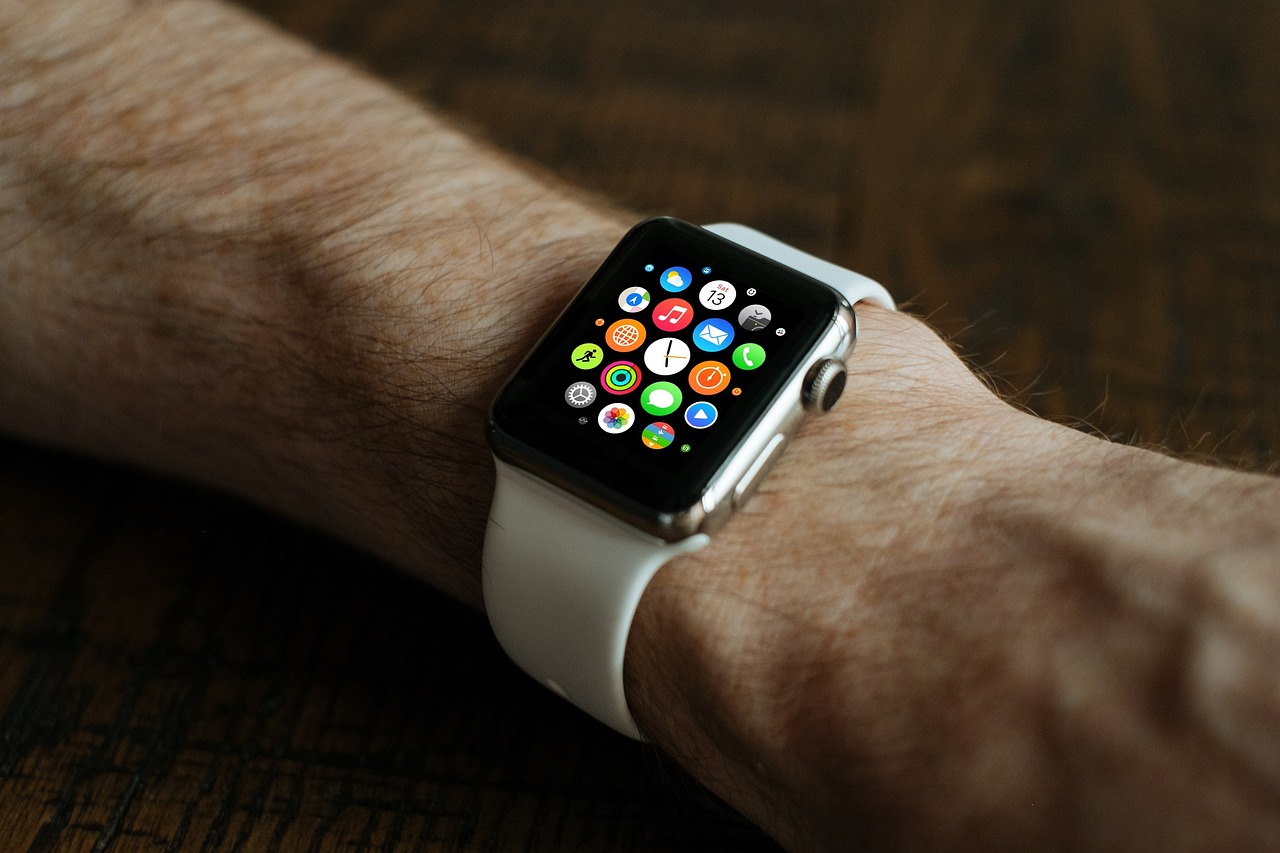Beyond Smartphones: Unveiling the Future of Wearable Technology

August 8, 2023
Smartphones have long been at the forefront of innovation, revolutionizing the way we communicate, work, and entertain ourselves. However, as technology continues to advance, a new era of gadgets is on the horizon – wearable technology. These tiny, versatile devices are promising to reshape our daily lives, seamlessly integrating into our routines, and unlocking a myriad of possibilities. In this article, we will explore the potential and envision the future of wearable technology.
7 Mind-Blowing Things You Can Do on Apple Watch Without an iPhone!
The evolution of wearable technology
Wearable technology isn’t a new concept; it has a rich history that dates back to the early 2000s when fitness trackers and heart rate monitors first made their appearance. These initial forays into wearables paved the way for what lies ahead. As consumer demand for more integrated and multifunctional devices grew, wearables evolved to include smartwatches, activity trackers, and even smart clothing.
Today, wearable devices have become more sophisticated, incorporating features like built-in GPS for accurate location tracking, heart rate monitoring for fitness enthusiasts, and sleep tracking for better sleep quality analysis. As technology continues to advance, wearables will become more seamlessly integrated into our lives, providing real-time insights and enhancing various aspects of our daily routines.
A multitude of form factors
One of the most exciting aspects of wearable technology‘s future is the sheer diversity of form factors that it will encompass. We are not limited to just wrist-based wearables; the possibilities are endless. Here are some of the exciting form factors that we can expect to see:
- Smart Glasses: Augmented Reality (AR) is set to take wearables to a whole new level. Smart glasses will overlay digital information onto the real world, providing users with a seamless blend of virtual and physical environments. Imagine walking down the street, and information about nearby points of interest appears right before your eyes. Smart glasses have the potential to revolutionize how we interact with the world around us, making them invaluable in fields like navigation, healthcare, and education.
- Smart Rings: These sleek and unobtrusive wearables are worn on your finger, packing various sensors and functionalities. From monitoring vital signs to tracking sleep patterns, smart rings offer a discrete and stylish way to stay connected to your health and well-being.
- Smart Fabrics: The future of wearables will include clothing with embedded sensors that can track various health metrics, monitor posture, and even adjust to temperature changes automatically. Smart fabrics will seamlessly integrate technology into our wardrobes, making wearable devices more comfortable and fashionable.
- Implantable Devices: Although still in the early stages of development, implantable wearables are being explored for medical and health-related applications. These devices could monitor chronic conditions from within the body, deliver medications as needed, and provide real-time data to healthcare professionals.
- Neural Interfaces: In the more distant future, we may witness the development of wearable technology that directly interfaces with the human brain. Neural interfaces could revolutionize how we communicate and interact with technology. They coul enable us to control devices with our thoughts and emotions.
The integration of AI and ML
The future of wearable technology lies in its ability to understand and cater to our unique needs seamlessly. Artificial Intelligence (AI) and Machine Learning (ML) will play a pivotal role in this regard. As wearables collect vast amounts of data about our behavior, health patterns, and preferences, AI algorithms will analyze and interpret this information to provide personalized insights and recommendations.
For instance, your smartwatch might analyze your daily activity patterns, sleep quality, and heart rate data to determine the most appropriate times for exercise and rest, ensuring you optimize your fitness routine. AI-driven wearables will also be able to adapt to your preferences over time.
Augmented reality and smart glasses
Augmented Reality (AR) is set to take wearables to a whole new level, especially with smart glasses. Imagine a world where essential information is presented directly in your field of view, eliminating the need to constantly glance at your smartphone. Smart glasses could display navigation instructions, contextual information about people you meet. More, they enhance the gaming experience, blending virtual elements seamlessly with reality.
In the workplace, AR-powered headsets will have a transformative impact. They will enable workers to access crucial information and instructions hands-free, leading to improved efficiency and reduced errors. For industries like manufacturing, maintenance, and construction, AR wearables will facilitate training, remote collaboration, and real-time troubleshooting.
Healthcare and remote monitoring
The future of wearable technology holds tremendous promise for healthcare. Wearables with advanced sensors will be able to continuously monitor vital signs, detect anomalies, and even administer medication automatically. For patients with chronic conditions like diabetes, heart disease, or respiratory issues, wearable medical devices will enable remote monitoring. They’ll allow doctors to provide better care and reduce hospital visits.
Imagine a wearable patch that monitors your blood glucose levels and automatically administers insulin when needed, providing a convenient and efficient solution for managing diabetes. These medical wearables will empower individuals. they will allow them to take charge of their health proactively, leading to improved outcomes and a better quality of life.
Wearables in the workplace
Wearable technology will significantly impact the way we work, enhancing productivity, safety, and collaboration. Smartwatches with productivity apps will streamline tasks, offer reminders, and help manage schedules. From setting up reminders for important meetings to managing email notifications, wearable devices will help professionals stay organized and focused throughout their workday.
In industries where safety is paramount, wearable devices will play a vital role in ensuring worker well-being. For instance, wearables with environmental sensors could detect hazardous conditions and alert workers to potential dangers, reducing the risk of accidents and injuries.
Furthermore, AR-powered wearables will transform training processes. They’ll allow employees to receive hands-on guidance and instructions in real-time, improving their skills and reducing the learning curve.
Adidas runs with Smart Contact Lens developer Mojo Vision
Environmental sensing and sustainability
The future of wearable technology extends beyond personal use and healthcare applications. Innovations in wearables will enable environmental sensing, contributing to sustainability efforts. For instance, wearable devices might monitor air quality, noise levels, and other environmental factors. This empowers individuals and communities to take proactive steps towards a cleaner, healthier planet.
By gathering and analyzing environmental data, wearables can raise awareness about pollution levels. They can help identify areas in need of improvement. Governments and organizations can use this data to implement targeted measures, leading to more sustainable and eco-friendly practices.
Skin-like wearable tech
Researchers are working on developing wearable technology that feels like a second skin. This would address the discomfort associated with current wearables that are often rigid and bulky. Canek Fuentes-Hernandez, an associate professor of electrical and computer engineering at Northeastern, has been working on a soft material that can stretch and flex like human skin. This material could lead to sensors that attach seamlessly to the skin, making them almost unnoticeable.
This second-skin-like material could also help address power issues with wearables. Devices that constantly monitor bodily functions can drain power quickly. The new stretchable material could potentially reduce the power consumption of certain processes in wearables.
Wearable technology and energy
The future of wearable technology is closely linked with the interconnectivity of devices and the ability to synchronize data between wearables and smartphones. Energy harvesting is emerging as a significant domain, focusing on converting body heat, movement, or solar energy into power. Companies like Epeas are working on ambient energy harvesting to create wireless devices that don’t require active charging. Facebook is exploring non-invasive sensors that allow hands-free typing using brain activity. Another area of innovation is haptic technology, which can recreate touch sensations, enhancing human-computer interactions.
Smart wearables in fashion
Wearables are now being designed not just for health tracking but also as fashion statements. For instance, Oura partnered with Gucci to connect fashion wearables to wellness. Ray-Ban and Meta have collaborated on smart glasses that allow users to capture their surroundings through photos or videos.
Get to know the new Google Pixel Watch
The future is Wearable
Wearable technology is on the brink of revolutionizing how we live, work, and interact with the world around us. From a diverse range of form factors to the integration of AI, AR, and healthcare applications, these devices are poised to become an integral part of our daily lives. The future of wearable technology holds boundless possibilities, limited only by our imagination and technological advancements. We can imagine exoskeletons for industrial use, more intelligent prosthetics that respond to individual commands. More, 3D printing of human tissue, and brain-computer interfaces that might allow telepathic typing. The possibilities are almost endless.
Embrace the revolution, as we step into a world where technology seamlessly integrates into the very fabric of our existence.








